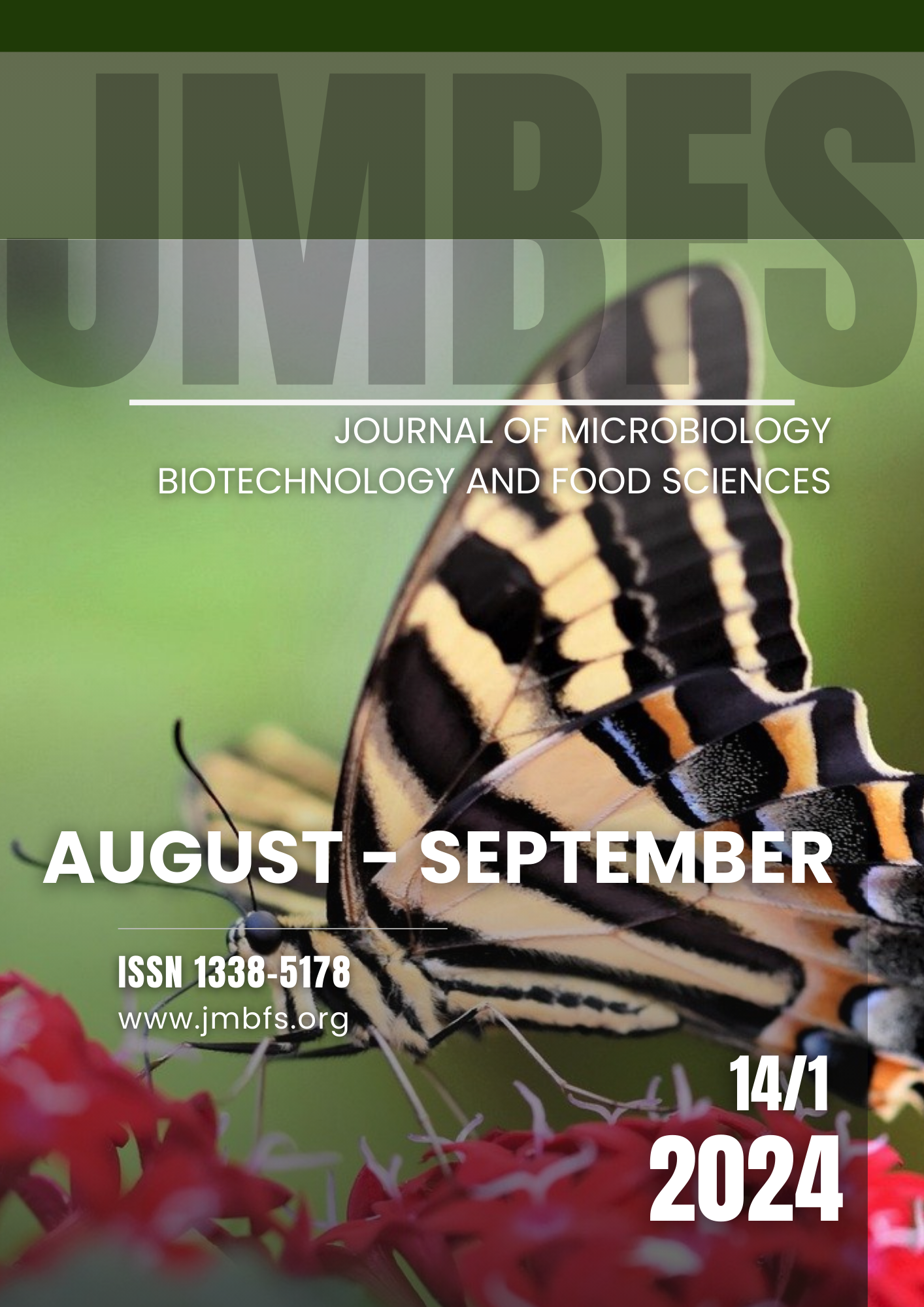MONITORING OF PESTICIDE RESIDUES IN GRAPEVINE LEAVES UNDER VARIANT FUNGAL DISEASE MANAGEMENT
DOI:
https://doi.org/10.55251/jmbfs.11107Keywords:
Vitis vinifera, Hibernal, pesticides, residuesAbstract
Food contamination is the result of over-reliance on fungicides in crop production. The presence of pesticide residues in agricultural commodities needs to be strategically solved by applying gentle agrotechnical procedures. The research aimed to evaluate the effect of the treatment of grapevine with fungicides on the content and mobility of 4 active substances in the leaves of the variety Hibernal. The experiment included a control variant treated with fungicides and an untreated variant. We focused on monitoring the active substances of fungicides used in the first half of the vegetation: azoxystrobin, cyflufenamid, difenoconazole, myclobutanil, and another 25 active substances, in terms of multi-residue analysis methodologies. Grape leaves for analysis were collected on two dates: in the phenological phase of berry development BBCH 73 and 14 days after grape harvest – BBCH 91. Samples were prepared according to STN EN 15662. For qualitative analyzes of residues, we used the QuEChERS method in combination with liquid (LC-MS/MS) and gas (GC-MS/MS) chromatography with tandem mass spectrometry. In the untreated variant, the contents of residues from both leaves collection were in undetectable values. In the leaf samples of the treated variant collected in BBCH 73, we established higher values of residues than the MRL determines, namely for azoxystrobin 0.083 mg/kg (MRL – 0.01 mg/kg). Azoxystrobin is the active substance of the Quadris max fungicide, and we applied this preparation 41 days before the first collection of leaves. In the analyzes of leaf sampling from the treated variant after grape harvest in BBCH 91, we found a decrease in the content of all monitored residues below detectable values. We consider the gradual degradation of residues in biological materials to be a very favorable result from the point of view of their impact on consumer health and the environment. Through visual observations of the vegetation, we found out that even the untreated variant had a perfect state of health. Hibernal is a variety suitable for biological production systems, and we assume that even in vintages with high pressure of fungal diseases, it is possible to maintain the health of the grapevine with ecological products. Using the appropriate grape variety combined with the right agrotechnical interventions makes it possible to use safer ecological practices to produce healthy food, maintaining sustainability and a healthy natural environment. The research will continue in the early Table grape varieties, where the vegetation period is shorter, and space for breaking down the residues is more difficult.
Downloads
Downloads
Published
How to Cite
Issue
Section
License
Copyright (c) 2023 Štefan Ailer, Lucia Benešová, Mojmír Baroň, Lucia Galovičová

This work is licensed under a Creative Commons Attribution 4.0 International License.
All papers published in the Journal of Microbiology, Biotechnology and Food Sciences are published under a CC-BY licence (CC-BY 4.0). Published materials can be shared (copy and redistribute the material in any medium or format) and adapted (remix, transform, and build upon the material for any purpose, even commercially) with specifying the author(s).





